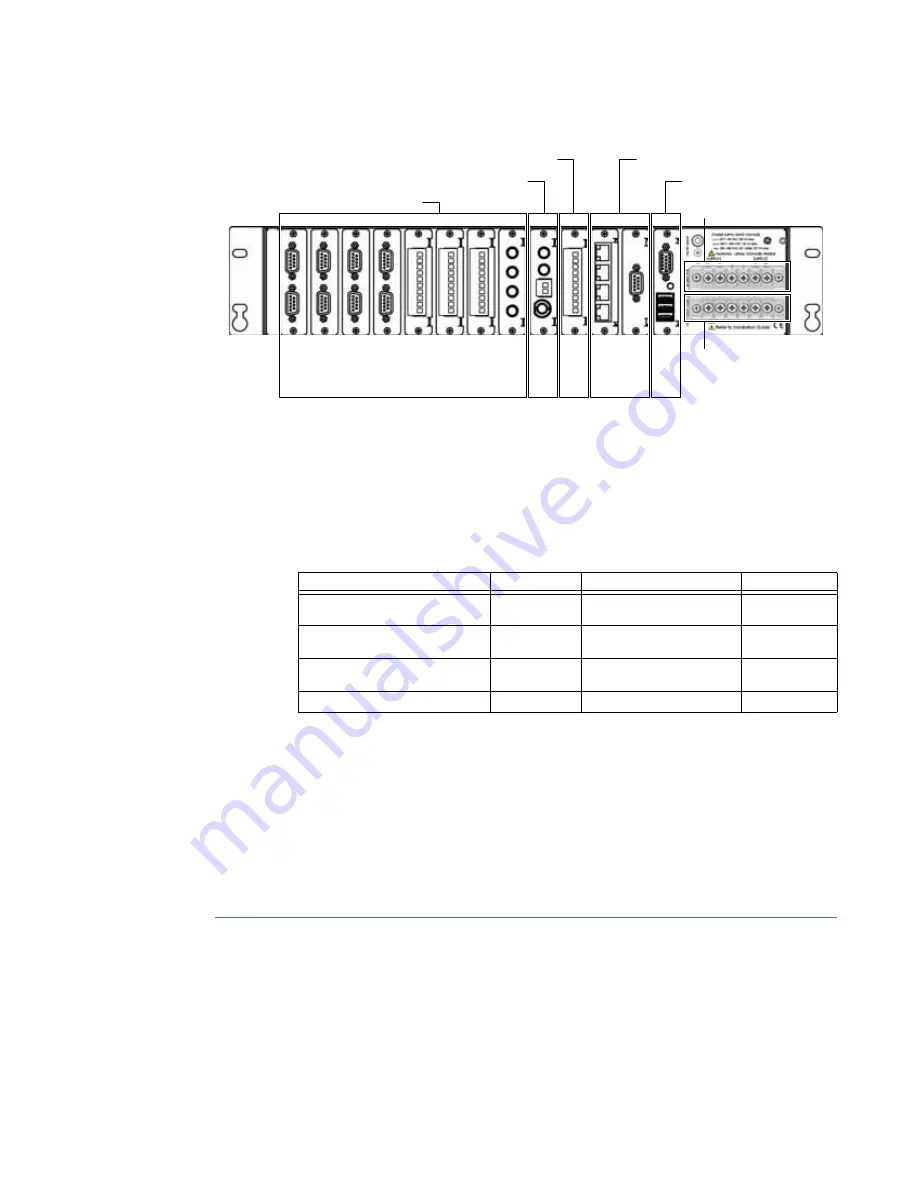
CHAPTER 4: CONNECTING TO DEVICES AND NETWORKS
RS-232 CONNECTIONS
D400 SUBSTATION GATEWAY USER’S MANUAL
GENERAL
53
Figure 29: D400 Field and Network Connections
The types of communication cards included in your D400 depend on what was ordered for
your substation application.
For a list and detailed description of the types of communication cards available, see
Chapter 3,
Setting Up Communication Cards
.
General cabling requirements
Cabling required to make physical connections to the D400 are as follows:
High-voltage installations
To provide higher EMC immunity and maintain CE Mark compliance, the serial cables used
for permanent RS-232 and RS-485 connections must comply with the following
requirements:
•
Cables must be shielded
•
D-type connector covers must provide EMC shielding (e.g. metallized plastic or die cast
metal covers).
RS-232 connections
The D400 accepts connections to RS-232 type devices through the RS-232 Adapter. The
RS-232 Adapter (GE Item No. 520-0207LF) is an RS-232 serial I/O adapter card that plugs
into any serial communication slot (slots 1 through 8) on the D400. It contains two
independently isolated RS-232 serial ports (
Port 1
and
Port 2
) each with a DB-9 connector.
Sl
ot 1
Sl
ot 2
Sl
ot 3
Sl
ot 4
Sl
ot 5
Sl
ot 6
Sl
ot 7
Sl
ot 8
Sl
ot 9
Sl
ot 10
Sl
ot 11
Sl
ot 12
Sl
ot 13
Serial Communication Slots
IRIG-B Input Slot
IRIG-B Distribution Slot
Network Slots
USB KVM Slot
Power Supply and
System Fail Alarms
External Power Source
Media
Designation
Cabling
Connector
Fiber Optic Ethernet
10BaseFL
100BaseFX
62.5/125 µm or 50/125 µm
multi-mode fiber cable
ST Connectors
(820 to 850 nm)
Twisted Pair Ethernet
10/100BaseT
UTP– Unshielded Twisted
Pair – CAT 5 or better
RJ-45
Redundant Twisted Pair Ethernet
10/100BaseT
UTP– Unshielded Twisted
Pair – CAT 5 or better
RJ-45
PPP Serial Over External Modem
RS-232
Standard RS-232 cable
DB-9
















































